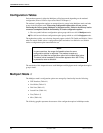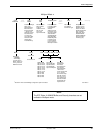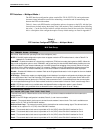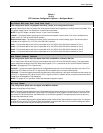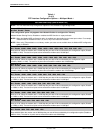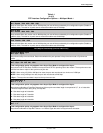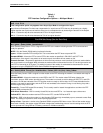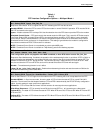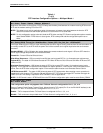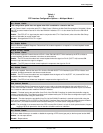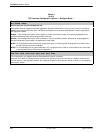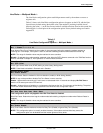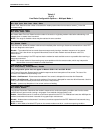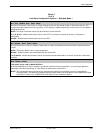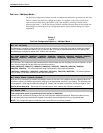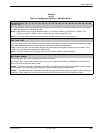
COMSPHERE 392xPlus Modems
4-16 November 1996 3920-A2-GN31-30
Table 4-1
(7 of 9)
DTE Interface Configuration Options — Multiport Mode l
RTS/CTS Delay: 0msec
Nxt 0msec 10msec 50msec 150msec 600msec 5
Request-to-Send/Clear-to-Send Delay. RTS/CTS Delay sets the delay time between the modem receiving RTS from the
DTE and the modem sending CTS to the DTE.
NOTE: This delay is only valid in applications when it is necessary to have a short delay between the time the DTE
raises RTS and the time the modem presents CTS to allow the DTE to send data.
NOTE: For this configuration option to be valid, both the RTS Action and the CTS Control configuration options must be
set to Stndrd RS232. If RTS Action is set to Ignore, RTS is always ON and this configuration option has no
effect.
LSD Control: Stndrd_RS232
Nxt Stndrd_RS232 Forced_On WinkWhenDisc Follows_DTR Sim_Cntl_Car =DTR/DiscOFF
Line Signal Detect Control. LSD is a signal indicating that the carrier signal is being received from the remote modem. It
is normally turned OFF to the DTE when the power level of the received carrier signal drops below the carrier detect
threshold.
Standard RS232 – LSD is ON when the modem detects the remote modem’s carrier signal. LSD turns OFF when the
carrier signal strength drops below carrier detect threshold.
Forced On – Forces LSD to be ON at all times.
Wink When Disconnect – LSD is normally forced ON, but can be turned OFF for 1 to 2 seconds upon a disconnect.
Follows DTR – The state of LSD follows the state of DTR. When DTR turns ON, LSD turns ON. When DTR turns OFF,
LSD turns OFF.
Simulated Control Carrier – LSD follows the state of RTS of the remote DTE via the V.13 simulated control carrier
signaling. This is required for hosts that cannot support full-duplex operation. If LSD Control is set to simulated control
carrier, then the RTS Action configuration option on the remote modem must be set to Simulated Control Carrier.
=DTR/Disconnect OFF – The state of LSD follows the state of DTR except when disconnecting once a connection is
established. In this instance, DTR remains ON and LSD turns OFF. DTR must then toggle OFF and then ON again for
LSD to turn ON. This setting is required for AT&T DATAKITr dial-out applications.
NOTE: If LSD Control is set to =DTR/DiscOff, then the DTR Action configuration option must be set to Stndrd_RS232.
XTXC Clamps TXC: Enable
Nxt Enable Disable
This configuration option only appears when TX Clock Source is configured for Port 1, 2, 3, or 4.
External Transmit Clock Clamps Transmit Clock. Allows the port’s TXC output (Pin 15 on the EIA-232-D interface) to be
clamped OFF when TX Clock Source is configured for Port 1, 2, 3, or 4.
Enable – TXC is clamped off when TX Clock Source is configured for Port 1, 2, 3, or 4.
Disable – TXC continues to be provided when TX Clock Source is configured for Port 1, 2, 3, or 4.



